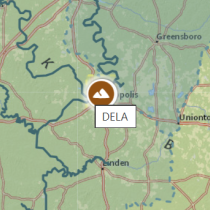Data Notification
Pilot Results and Updated Methodology - mosquito pathogen status (DP1.10041.001)
October 30, 2025
This is an update to a previous Data Notification regarding planned changes to mosquito pathogen status data product (DP1.10041.001).
NEON has received pilot data results for a non-targeted RNA sequencing approach to identify viruses found in 9 mosquito samples comprised of 3 pools of 3 individuals from each of 3 different mosquito species: Aedes vexans, Coquillettidia perturbans, and Culex tarsalis. The biggest challenge associated with identifying mosquito RNA viruses is that the mosquito RNA dominates the sample, yielding a small minority of reads of viral origin.
In the pilot study, this challenge was addressed using two different depletion methods to reduce the amount of mosquito RNA in each sample. The methods included a mosquito-species specific subtractive hybridization approach, and a species-agnostic depletion approach using a kit manufactured by Zymo Research. The Zymo approach removed a much greater percentage of host mosquito RNA from the samples (<1% of sequences mapped to 18s/28s mosquito sequences) and yielded a higher diversity of viruses than the subtractive hybridization approach. Unfortunately, there was very little overlap in the viruses detected by the two methods. The results yielded concern that there may be cross-reactivity between the host mosquito RNA removal techniques and the viruses of interest. Consultations with the Mosquito Technical Working Group and other experts in the field indicated that an alternative to the depletion approach should be considered.
Experts suggested an alternate probe enrichment approach to amplify the viruses in the sample prior to sequencing, instead of the depletion approaches used in the pilot. The enrichment probe is a more advanced approach that offers robust detection capability for all viruses included in the probe. To maximize the generality of the probe for mosquito viruses, a list of all known mosquito virus sequences will be generated from existing databases (e.g., refseq), literature, and the results from the pilot study. As with all approaches, the probe enrichment approach does come with risk – including the potential to miss viruses that are not yet discovered and that differ substantially from viruses in existing databases. The community input received to date indicates that the benefit of more robust viral detection is worth this risk.
The probe panel design will be completed January – February 2026, with processing of mosquito samples collected from 2023-2025 expected to be completed in the spring and summer of 2026.
Please use the Contact Us form for additional information, to provide feedback or to share any questions or concerns; include the term "mosquito pathogen changes" in the body of your request.
